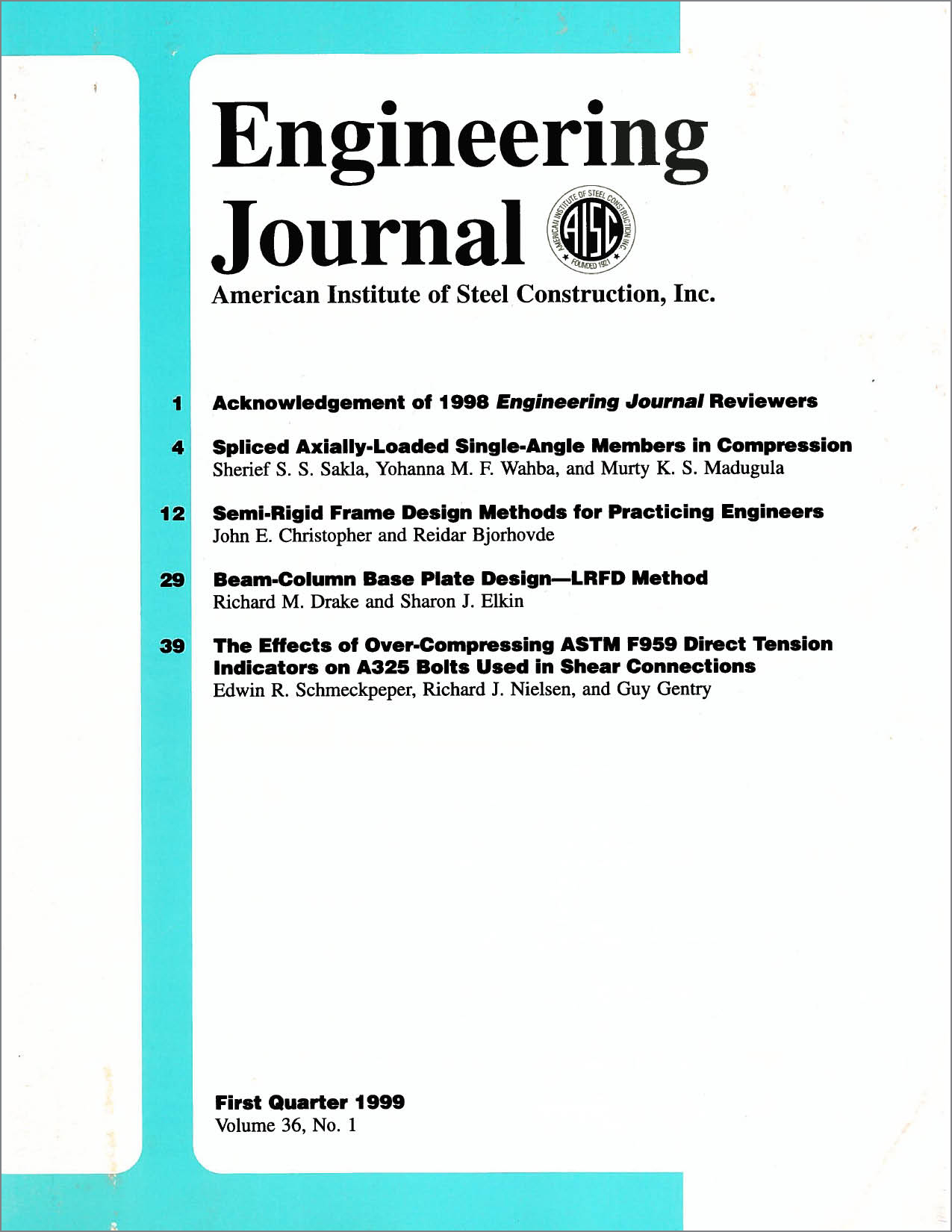Beam-Column Base Plate Design—LRFD Method
DOI:
https://doi.org/10.62913/engj.v36i1.714Abstract
It is common design practice to design a building or structure beam-column with a moment-resisting or fixed base. Therefore the base plate and anchor rods must be capable of transferring shear loads, axial loads, and bending moments to the supporting foundation. Typically, these beam-column base plates have been designed and/or analyzed by using service loads or by approximating the stress relationship assuming the compression bearing location.The authors present another approach, using factored loads directly in a method consistent with the equations of static equilibrium and the LRFD Specification. The moment-resisting base plate must have design strengths in excess of the required strengths, flexural (MM), axial (Pu), and shear (Vu) for all load combinations.

